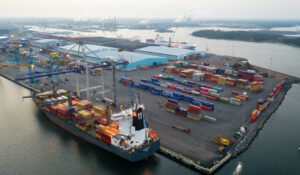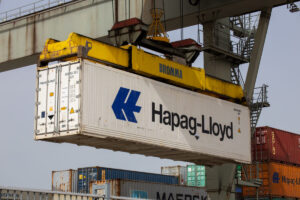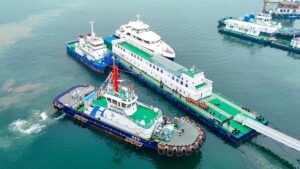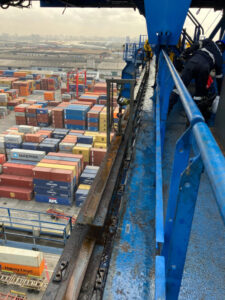In an unprecedented year for nearly every market, the ocean shipping industry was no exception.
The new landscape accelerated by the pandemic has brought the ocean shipping industry new opportunities for growth in 2021 and has made stakeholders re-evaluate current strategies they have had in place for years.
Navis’ predictions for the cargo supply chain include:
1. More investment in cloud-based technologies: As a result of social distancing measures brought on by the COVID-19 pandemic, on-site management of terminal operations had decreased this year in exchange for more remote operations made possible by innovative technology. According to Navis’ customer survey, titled “Understanding Your Terminal Strategy with Cloud-based Technologies”, market interest in cloud-based solutions are on the rise – in fact, per the survey, interest in these solutions had risen nearly 40% compared to last year (54% in 2019 vs. 93% in 2020), with 79% of respondents having an existing timeline to move or considering moving to the cloud.
“We’ve seen the cloud-based technology trend in the ocean shipping industry increase exponentially as a result of the COVID-19 pandemic and expect it to continue to rise next year,” said Younus Aftab, Chief ProductOfficer at Navis. “Terminals are realising they can perform nearly all tasks remotely, which allows them to streamline workflow, cut down on costs and prioritize safety for their staff, leading to more reliable and stable operations to best serve their customers.”
2. Rise of smart technology for inland and marine logistics: This year has demonstrated the value of enhanced visibility and predictability in operations, and the importance of technology that can collect and analyse data to help stakeholders make better business decisions. According to the “Automation 2020: Perceptions, challenges and opportunities for Container Terminal Automation” Navis customer survey, 94% of respondents agreed that artificial intelligence and machine learning would be critical to improve optimization at automated terminals at some level in the near future. These offerings, along with other innovative technology, will help terminals maximize operational results across the inland and ocean shipping industries and uncover new insights for strategic business outcomes.
3. Automation adoption at terminals will accelerate: Automation has been on the rise in the industry for several years, however terminals are now more rapidly turning to the technology to uplevel productivity and keep up with the changing industry landscape in an effort to remain competitive.
According to the Navis “Automation 2020: Perceptions, challenges and opportunities for Container Terminal Automation” customer survey, 94% believe it will be important for terminals to automate operations in the next 3-5 years. Additionally, 70% of terminals believe automation could increase productivity by 15% or more, with increased operational safety (82%) and lower overall terminal operation costs (73%) as its biggest benefits, proving the importance of incorporating it in the overall business plan.
4. Increase focus on sustainable operations: With the bigger focus on the supply chain this year, many companies have been forced to re-evaluate their logistics strategies to ensure assets are being used to deliver value for the business and the environment.
In the first half of 2020, decreased traffic at congested ports and terminals around the world had a positive impact on the air quality and environment, reinforcing the longer-term sustainability trend we were already seeing. Innovative technology to help terminals monitor operations to run more efficiently and the use of rail instead of trucks for transport, are expected to be on the rise to help ports and terminals achieve more sustainable outcomes.
“Power usage efficiency, electrification and more eco-friendly fuels are part of the sustainability mission, however, the software solutions behind the equipment, are an important piece of the puzzle to help terminals extend their reach towards higher sustainability goals,” said Andy Barrons, Chief Strategy Officer, Navis.
“There was already a trend toward more green operations pre-pandemic, and now we have seen the true impact of excess emissions, I would expect consideration for the environment in supply chain strategies will become more prominent in the coming year.”








